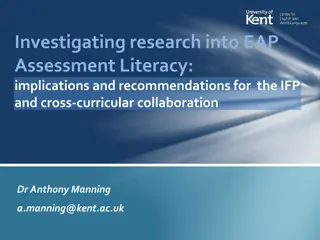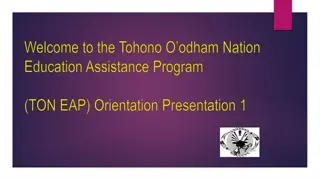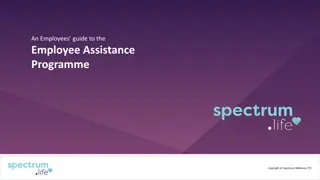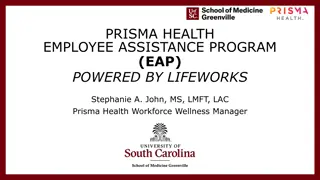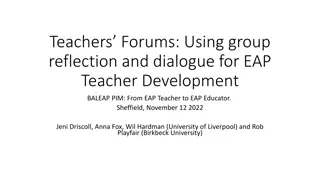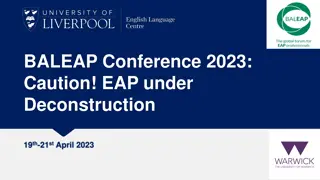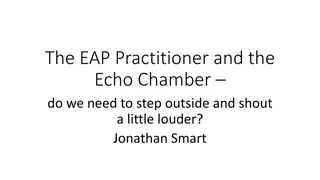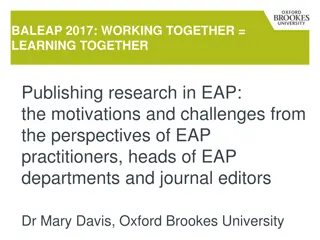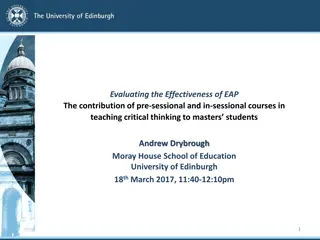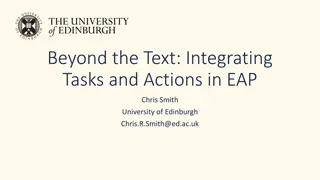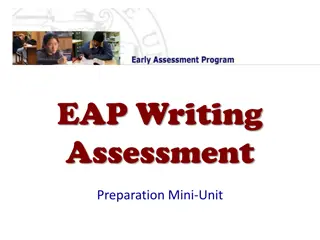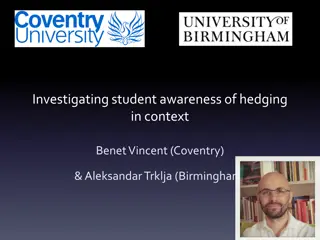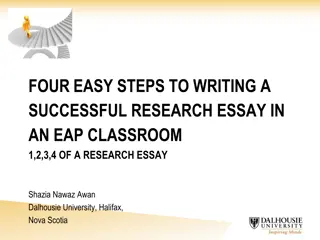Implications of A.I. Technology on EAP Writing Skills
Recent A.I. technology developments are impacting the future of teaching EAP writing skills. The landscape includes faster Large Language Models, integration with popular applications, and specialized A.I. tools for researchers and students. Vulnerabilities to A.I. include massification of higher education and traditional assessment methods. Education institutions worldwide are adapting to these changes as some universities ban A.I. in assessments while others embrace it.
Download Presentation

Please find below an Image/Link to download the presentation.
The content on the website is provided AS IS for your information and personal use only. It may not be sold, licensed, or shared on other websites without obtaining consent from the author.If you encounter any issues during the download, it is possible that the publisher has removed the file from their server.
You are allowed to download the files provided on this website for personal or commercial use, subject to the condition that they are used lawfully. All files are the property of their respective owners.
The content on the website is provided AS IS for your information and personal use only. It may not be sold, licensed, or shared on other websites without obtaining consent from the author.
E N D
Presentation Transcript
Will the next student essay you mark be written by A.I.? Implications of the recent A.I. technology development on the future of the teaching of EAP writing skills Helen Beech & Angela Xia April 20th , 2023
Outline Landscape: where are we now? AIGC/Generative AI: why are we vulnerable to it? Plagiarism and cheating in a post-AIGC world The role of writing A Chinese EMI institution s potential approach
Landscape: where are we now? 1. Faster, better, more Large Language Models
Landscape: where are we now? 2. Integration of AIGC with existing popular applications
Landscape: where are we now? 3. Microsoft 365 + CoPilot Source: https://www.howtogeek.com/879737/microsoft-365-copilot-will-add-ai-to-word-outlook-and-more/
Landscape: where are we now? 4. More specialized AIGC-applications targeting researchers and students
AIGC/Generative AI: why are we vulnerable to it?
Why are we vulnerable to it? Two main reasons: 1. Massification of Higher Education 2. The types of assessments that we often use on EAP modules
Amid excitement and anxiety, the rest of the world is trying very hard to keep apace with the latest AIGC development , including education institutions
Which side to take? As of March, 8 of the 24 Russell Group universities have officially announced a ban on the program in assessed work1 International Baccalaureate (IB) said that said schoolchildren will be allowed to use the chatbot in their essays3 Ban it? Embrace it? More universities are in the process of updating guidance and assessment policies 2 1. https://www.redbrick.me/top-uk-universities-ban-chat-gpt 2. https://inews.co.uk/news/oxford-cambridge-ban-chatgpt-plagiarism-universities-2178391 3. https://www.ibo.org/news/news-about-the-ib/statement-from-the-ib-about-chatgpt-and-artificial-intelligence-in-assessment-and-education/
Which side to take? Imperial College London University College London We believe these tools are potentially transformative as well as disruptive, that they will feature in many academic and professional workplaces, and that rather than seek to prohibit your use of them, we will support you in using them effectively, ethically, and transparently. 2 Submitting work and assessments created by someone or something else, as if it was your own, is plagiarism and is a form of cheating, and this includes AI-generated content. 1 1 https://www.imperial.ac.uk/about/leadership-and-strategy/provost/vice-provost-education/conversational-ai- tools-guidance/ 2 https://www.ucl.ac.uk/teaching-learning/assessment-resources/ai-education-and-assessment-staff-briefing-1
Plagiarism and cheating in a post-AIGC world
Q1: Which of these would you consider cheating ? 1 2 Q2: Which of these is relevant to our students future? 3 4 5 Q3: Which of these would you use in your work as a teacher? 6 Source https://ditchthattextbook.com/ai/
The role of writing (Academic writing) is the main way that students consolidate their learning in a subject area, the means by which tutors judge the extent students have understood material, and the main instrument for assessing success or failure . Hyland (2006, p.56)
The role of writing (ChatGPT and other forms of Generative AI) may push professors to consider the way writing is used for assessment in courses that are not designed to develop writing One of the things that may come up is we discover that certain written assessments we ve done because we think students should be writing could be better done in other ways . John Warner, in a recent interview with Beckie Supiano (2023)
The role of writing writing-intensive classes need to be small enough so that instructors can offer personalized feedback. This is especially important because it creates buy-in from those who matter: the students. Why would students who are getting little to no feedback on their work not resort to ChatGPT to write their essays? De Oliveira (2023)
The role of writing Why would they make themselves vulnerable on a page (for writing is indeed a very vulnerable act) if they know that the instructor reading doesn t have the resources to offer generous feedback? Better to let the machine produce a bland text than to take risks finding your own idiosyncratic voice. The problem is not just the technology, but the context in which the technology embeds itself. If students feel like they are just another cog in the university assembly line, then they will submit generic, machine-produced essays". De Oliveira (2023)
A Chinese EMI institutions potential approach
English Language Centre School of Languages, XJTLU Context Largest transnational EMI university in China 5000+ new UG students and 3000+ PG students every year ELC is responsible for delivering Y1 (EGAP approach) and Y2 (ESAP approach) credit-bearing EAP modules
English Language Centre School of Languages, XJTLU B2+ expected language proficiency at the end of Y2 B1: average language proficiency of new Y1 UG students
Potential Approach Y2 ESAP Y1 EGAP Include more analog tests Include more project-based Encourage critical thinking and learning tasks problem-solving skills Promote more language and Reduce the weight of written content integration coursework Increase student engagement More emphasis on speaking Ensure students language assessment proficiency development Find a way to link speaking and writing assessment (e.g., viva approach)
Potential Approach: EAP for Design Context EAP module for Y2 students from the Design School, XJTLU. 10 credit, year-long 450+ students and 8 EAP teachers
Potential Approach EAP for Design After Before Three coursework A series of in-class tests added One writing coursework Project-based Learning Two speaking coursework Two projects added Exam Final project worth 70% of Two-hour integrated exam the module marks Resit exam also changed to a project
Summary Acknowledging the fact that AI is going to stay and students will use them now matter how we want to regulate their use behaviors. Rethink and keep improving the contextualized approach to EAP teaching and assessment Continue to reskill and upskill so that we can fully tap the benefits of AIGC applications
References De Oliveira, P.L.S., 2023. The Case for Luddism Against ChatGPT. Available online: https://www.insidehighered.com/views/2023/04/03/case-luddism- against-chatgpt-opinion (Accessed: 3rd April 2023) Hyland, K., 2006. English for Academic Purposes: An Advanced Resource Book. New York: Routledge. Supiano, B., 2023. Will ChatGPT change how professors assess learning? It won't be easy without their college's' support. Available online: https://www.chronicle.com/article/will-chatgpt-change-how- professors-assess- learning?cid2=gen_login_refresh&cid=gen_sign_in (Accessed: 14th April, 2023)
Thank you! Questions?


